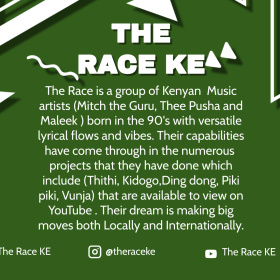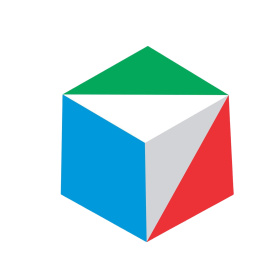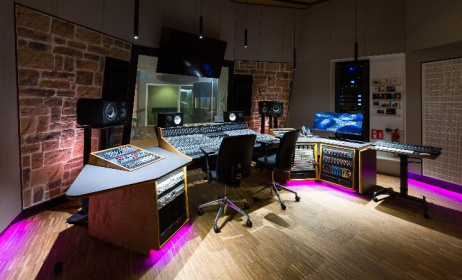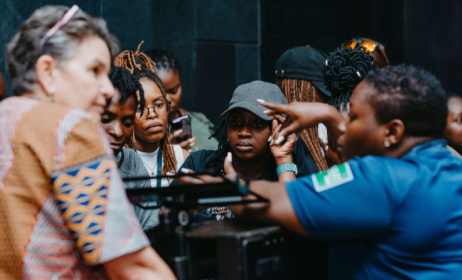Crowdfunding platforms for musicians
Since its inception in 1997, crowdfunding has seen $34 billion raised from more than six million successfully run campaigns around the world.[1] Furthermore, with a surge in the online creator economy following the COVID-19 pandemic, the global crowdfunding market is expected to reach $100 billion by 2025, underscoring its potential value as a revenue stream to musicians in the digital age.[2]
From the perspective of the African continent, there is also much room for growth: in 2015, crowdfunding initiatives funded in Africa accounted for only 1% of global income ($70 million), with nearly half of this money being raised in just one country (South Africa).[3]
Crowdfunding platforms harness the power of disintermediation, offering musicians a direct way to receive financial support from their fans. For musicians around the world, this translates to a convenient, relatively risk-free method of accessing capital that can also serve as an integrated marketing tool for the content they produce.[4]
This article provides an overview of crowdfunding and membership platforms for musicians. Remember that you can find important supplementary information – such as advice on creating and leveraging a personal brand and how to maximise merchandising opportunities – in the Revenue Streams for Music Creators in South Africa series.
Different platforms, different opportunities
Though they are similar revenue streams – with fans contributing money directly to artists – crowdfunding platforms offer different structures, and are best suited to different purposes. It is useful to draw a basic distinction between strict crowdfunding platforms – such as Indiegogo, Kickstarter or Thundafund– and membership platforms, such as Patreon.
As this useful comparison article indicates, different platforms will appeal to musicians for different reasons.
- Crowdfunding platforms are best for one-off, tangible projects. You have something you wish to produce – an album, a music video, merchandise or a concert tour – and you reach out to fans to help you fund its production. Usually, donations are incentivised in a tiered structure, with greater benefits offered to those who donate higher sums of money.
- Membership platforms, on the other hand, are geared towards consistent, monthly financial support. Fans, commonly known as ‘patrons’, pay a subscription fee, for which they receive exclusive access to paywalled content. This content can also be tiered to accommodate various levels of membership and different monthly subscription fees.[5]
Crowdfunding platforms
Over the past decade, an array of digital crowdfunding platforms have emerged. From international mainstays such as Indiegogo, Kickstarter, and GoFundMe, to more localised options such as Thundafund, M-Changa, and BackaBuddy, there are many different pathways for you to access the growing crowdfunding market.[6] According to the Revenue Streams for Music in Creators in South Africa 2022 report, crowdfunding contributed an average monthly income of R9 321.
These platforms work in much the same way: you register a profile and upload some information (including a video) about your project to incite audience interest.
But there are some important factors to bear in mind when choosing which platform is right for you:
- Ensure that the platform you choose has sufficient market penetration. Kickstarter boasts 18 million total backers and 180 000 successful projects. Indiegogo, meanwhile, has a community of 9 million supporters, with an estimated 8 000 active projects at any given time. These numbers stand in stark contrast to the figures reported by M-Changa (nearly 1 million backers and 50 000 projects) and Thundafund (25 000 supporters and 1 400 successful projects).
- Pay careful attention to the funding scheme offered by the various platforms. With Kickstarter, the only option is a fixed, all-or-nothing scheme – meaning that you are only paid your investment if your total goal is reached. Indiegogo, on the other hand, is more flexible, allowing you to keep whatever you raise, even if your total goal is not reached. Thundafund, meanwhile, offers a hybrid model, allowing users to set both a Tipping Point and a Dream Goal.
- Pay attention to platform fees. Expect to pay a basic commission fee of 5% per donation (7% on Thundafund), plus a payment processing fee of about 3% per donation. Therefore, a smaller number of high-value donations is generally preferable to a larger number of small-value donations, as you will be subjected to fewer platform fees and payment processing charges.
- Most importantly, take some time to research the respective success rates of the different platforms. As of November 2021, Kickstarter reported a 37% success rate for funding initiatives, while Indiegogo’s success rate (i.e. projects that are fully funded) is 18%.[7] Soon after it launched, Thundafund boasted an incredible success rate of 70% in 2015[8], though it is reasonable to expect that this has declined in recent years.
Much formal research has been dedicated to crowdfunding initiatives and their growing role in the mainstream economy. Some key insights from these papers are summarised below:[9]
- A 2014 study by Ethan Mollick that studied a dataset of 48 500 Kickstarter projects revealed that the major determinants of success were strength of personal networks, project quality and geographical proximity to funders.[10]
- Funding from friends and family plays a key role in the early stages of fundraising.[11]
- External support for a crowdfunded project will increase as the project nears its target goal.[12]
- Perceptions of product creativity positively influence crowdfunding performance.[13]
- All-or-nothing campaigns are more successful than keep-it-all campaigns, as they offer reduced risk and greater reward to funders.[14]
Keep these insights in mind as you plan and execute your crowdfunding campaign. You can find many helpful resources and how-to articles online, such as this one from Indiegogo, and another from Oberlo, which does a great job of explaining the different rewards and incentives you can offer to potential backers.
Video: A recent crowdfunding campaign by South African musician Guy Buttery raised more than R130 000.
Membership platforms
Though there are alternatives, Patreon has emerged as the clear choice for creative professionals aiming to secure monthly support through a subscription base of fans.[15] While the data and research presented in this article has been drawn exclusively from Patreon studies, it is reasonable to expect that these insights should apply equally well to other membership platforms, such as Podia and Ko-fi.
A 2019 study by Tobias Regner reveals that “the top 1% of creators on Patreon (about 250) crowdfund a monthly income of at least $2 500 [R39 000]. The top 5%, or about 1 200 creators, receive more than $750 monthly.”[16] The flip side of this distribution curve, of course, is that most creators on Patreon early very little, if anything at all. In 2018, Daniel Sanchez reported that less than 2% of creators on Patreon earned a minimum wage[17], and many commentators have pointed out the problematic concentration of wealth among very few creators on the site.[18]
In order to start a Patreon page, like most other crowdfunding platforms, you will need to set up a profile. Regner’s study is very helpful here, correlating the following profile features with subscription success:[19]
- Campaigns should communicate why they deserve to get funded.
- Profile pages should include a high-quality image.
- Profile pages and individual campaigns should include a text introduction, ideally between 49 and 150 words in length.
- Creator goals should be clearly defined and communicated.
- Creators should include a ‘thank you’ video for new patrons.
In addition to ensuring that you launch your Patreon page with these insights in mind, spend some time thinking about what you will offer to your supporters, and how you will provide them with a consistent feed of engaging content. As well as access to the music you produce, could you offer behind-the-scenes content, live-streamed performances, exclusive merchandise, or the chance for supporters to be involved in your creative process through opinion polls and social networking?
There are many instructive articles available on the internet about growing your Patreon audience successfully, including this 2020 piece by Cherie Hu, not to mention a wealth of resources hosted by the official Patreon blog, such as important metrics to monitor, and data-driven insights to help you launch your account successfully.
Currently, South African musicians are somewhat underrepresented on Patreon, though there is an interview on the company’s official site with Cape Town-based musician Nate Maingard, who says he launched his membership page after confronting “a sense of powerlessness because I didn’t feel like I was in control of whether [my career] worked or not.” He says he began his Patreon page after ultimately realising, “I’m going to have to do this myself.”[20]
According to the Revenue Streams for Music in Creators in South Africa 2022 report, patronage contributes an average monthly income of R13 163.
Final thoughts
Although success rates are variable, crowdfunding and membership platforms remain promising revenue streams for South African musicians. In the words of researcher Tobias Regner, “The crowdfunding model seems to offer a viable alternative to the creative class, one that allows a more direct interaction between creator and crowd.”[21]
Video: Patreon is the leading membership platform for creative professionals.
Resources and citations
- [1] Fundly. (2020). Crowdfunding Statistics. Accessed on 20 November, 2021: https://blog.fundly.com/crowdfunding-statistics/
- [2] Fundly (2020). ibid.
- [3] Covington Africa. (2017). Crowdfunding in Africa: Opportunities and Challenges. Accessed on 20 November, 2021: https://www.covafrica.com/2017/02/crowdfunding-in-africa-opportunities-and-challenges/
- [4] Prive, T. (2012). Top 10 Benefits Of Crowdfunding. Forbes Magazine. Accessed on 20 November, 2021: https://www.forbes.com/sites/tanyaprive/2012/10/12/top-10-benefits-of-crowdfunding-2/?sh=5a1f8c162c5e
- [5] Seitz, O. (2018). Patreon vs Kickstarter vs Indiegogo: Which Platform Is Best for You? Accessed on 20 November, 2021: https://blog.patreon.com/patreon-kickstarter-indiegogo
- [6] Kearl, M. & Rosenston, M. (2021). Best Crowdfunding Platforms. Accessed on 20 November, 2021: https://www.investopedia.com/best-crowdfunding-platforms-5079933
- [7] The Crowdfunding Formula. (2021). Indiegogo vs Kickstarter: Which One To Choose? Accessed on 20 November, 2021: https://blog.thecrowdfundingformula.com/indiegogo-vs-kickstarter/
- [8] Mulligan, G. (2015). Africa Discovers the Power of Crowdfunding. BBC News. Accessed on 20 November, 2021: https://www.bbc.com/news/business-33100535
- [9] Short, J. C., Ketchen, D. J., McKenny, A. F., Allison, T. H., & Ireland, R. D. (2017). Research on Crowdfunding: Reviewing the (Very Recent) Past and Celebrating the Present. Entrepreneurship Theory and Practice, 41(2), 149–160. https://doi.org/10.1111/etap.12270
- [10] Mollick, E. (2014). The Dynamics of Crowdfunding: An Exploratory Study. Journal of Business Venturing, 29 (1), 1-16. https://doi.org/10.1016/j.jbusvent.2013.06.005
- [11] Agrawal, A., Catalini, C. & Goldfarb, A. (2014). Some Simple Economics of Crowdfunding. Innovation Policy and the Economy. 14. 63-97. https://doi.org/10.1086/674021
- [12] Kuppuswamy, V. & Bayus, B.L. (2017). Does My Contribution to Your Crowdfunding Project Matter?, Journal of Business Venturing. 32 (1). 72-89. https://EconPapers.repec.org/RePEc:eee:jbvent:v:32:y:2017:i:1:p:72-89
- [13] Davis, B.C., Hmieleski, K.M., Webb, J.W. & Coombs, J.E. (2017.) Funders' positive affective reactions to entrepreneurs' crowdfunding pitches: The influence of perceived product creativity and entrepreneurial passion. Journal of Business Venturing. 32(1). 90-106. https://doi.org/10.1016/j.jbusvent.2016.10.006
- [14] Cumming, D.J., Leboeuf, G. & Schwienbacher, A. Crowdfunding Models: Keep-It-All vs. All-Or-Nothing. Financial Management. 2020 (49). 331– 360. https://doi.org/10.1111/fima.12262
- [15] Stassen, M. (2021). Patreon is Now Valued at $4B After Raising $155M in Latest Funding Round. Accessed on 20 November, 2021: https://www.musicbusinessworldwide.com/membership-platform-patreon-raises-155m-increases-valuation-to-4bn/
- [16] Regner, T. (2020). Crowdfunding a Monthly Income: an analysis of the membership platform Patreon. Journal of Cultural Economics. 45. https://doi.org/10.1007/s10824-020-09381-5
- [17] Sanchez, D. (2018). Less Than 2% of Content Creators on Patreon Earn Monthly Minimum Wage. Accessed on 20 November, 2021: https://www.digitalmusicnews.com/2018/01/02/patreon-content-creators-monthly-minimum-wage/
- [18] Knepper, B. (2017). No One Makes a Living On Patreon. The Outline. Accessed on 20 November, 2021: https://theoutline.com/post/2571/no-one-makes-a-living-on-patreon?zd=2&zi=jq5g7kv7
- [19] Regner, T. (2020). ibid.
- [20] Seitz, O. (2018). Meet The Musician Who Sacrificed Fame to Pursue the Support of 1,000 True Fans. Accessed on 20 November, 2021: https://blog.patreon.com/how-to-make-money-with-music-nate-maingard
- [21] Regner, T. (2020). ibid.
This article is part of the Revenue Streams for African Musicians project, supported by UNESCO’s International Fund for Cultural Diversity in the framework of the UNESCO 2005 Convention on the Protection and Promotion of the Diversity of Cultural Expressions, the Siemens Cents4Sense programme, Siemens Stiftung, Goethe-Institut, the National Arts Council of South Africa and Kaya FM.
Editing by Kalin Pashaliev
































Comments